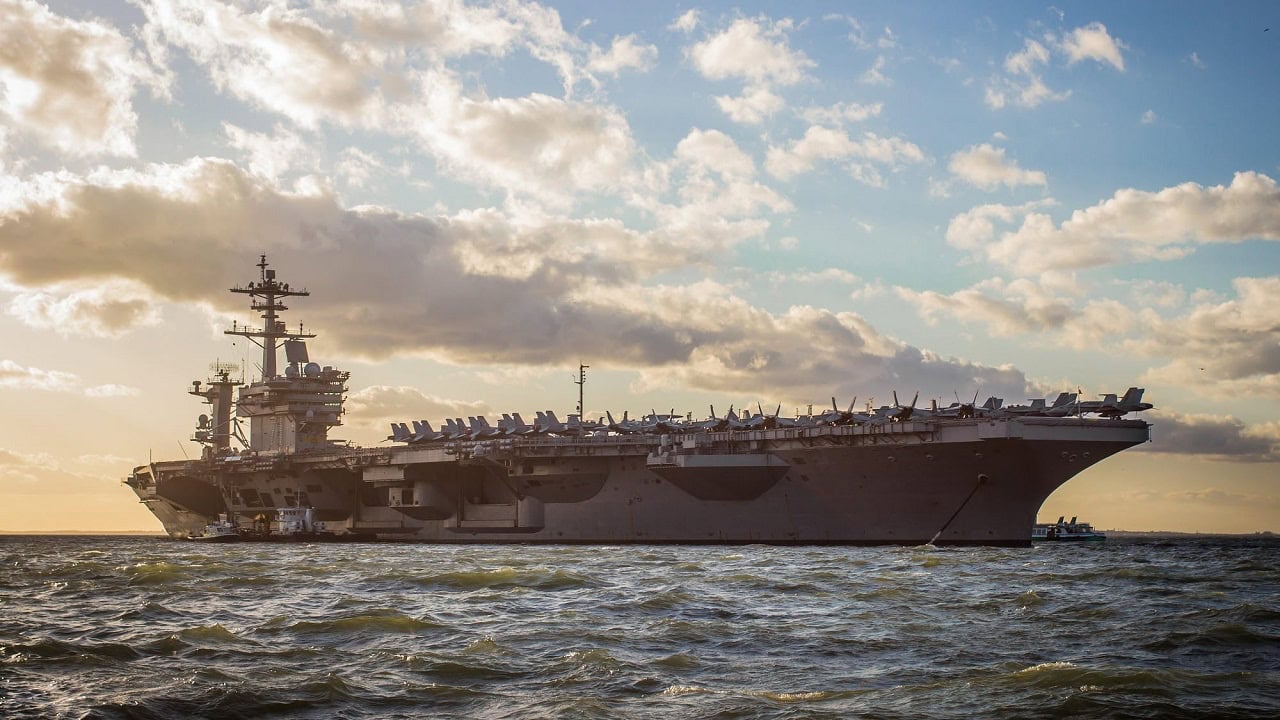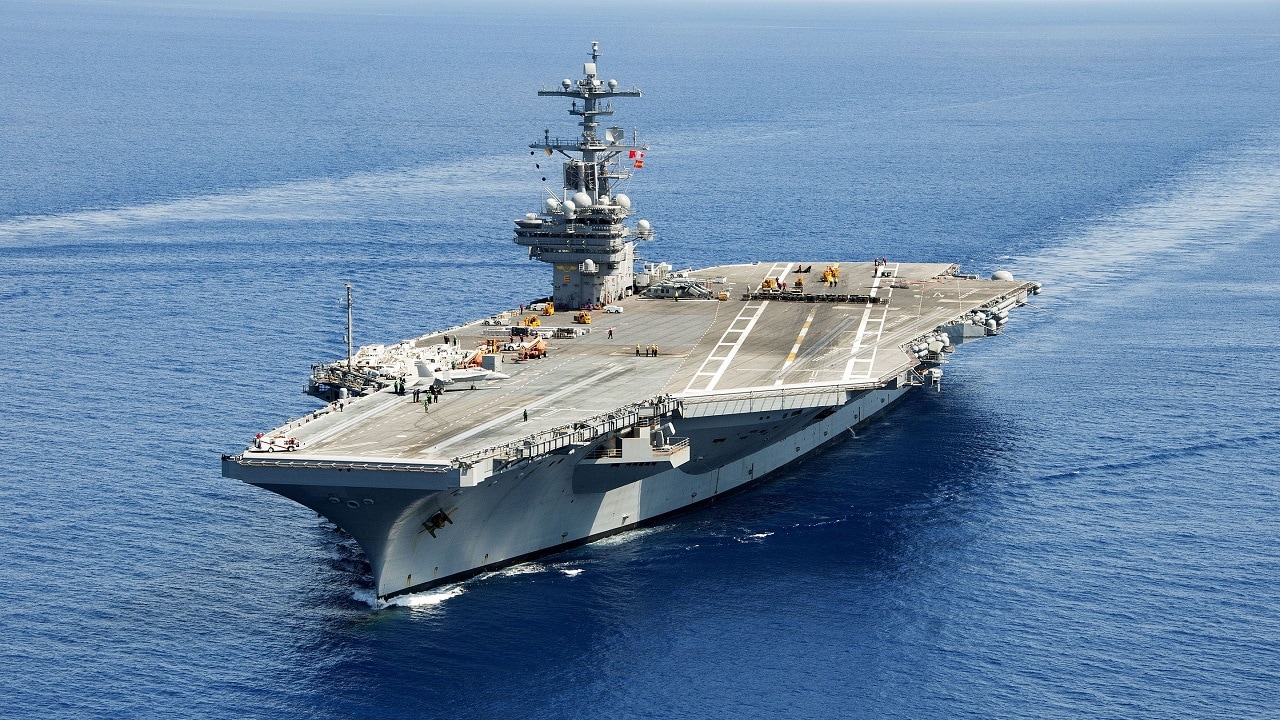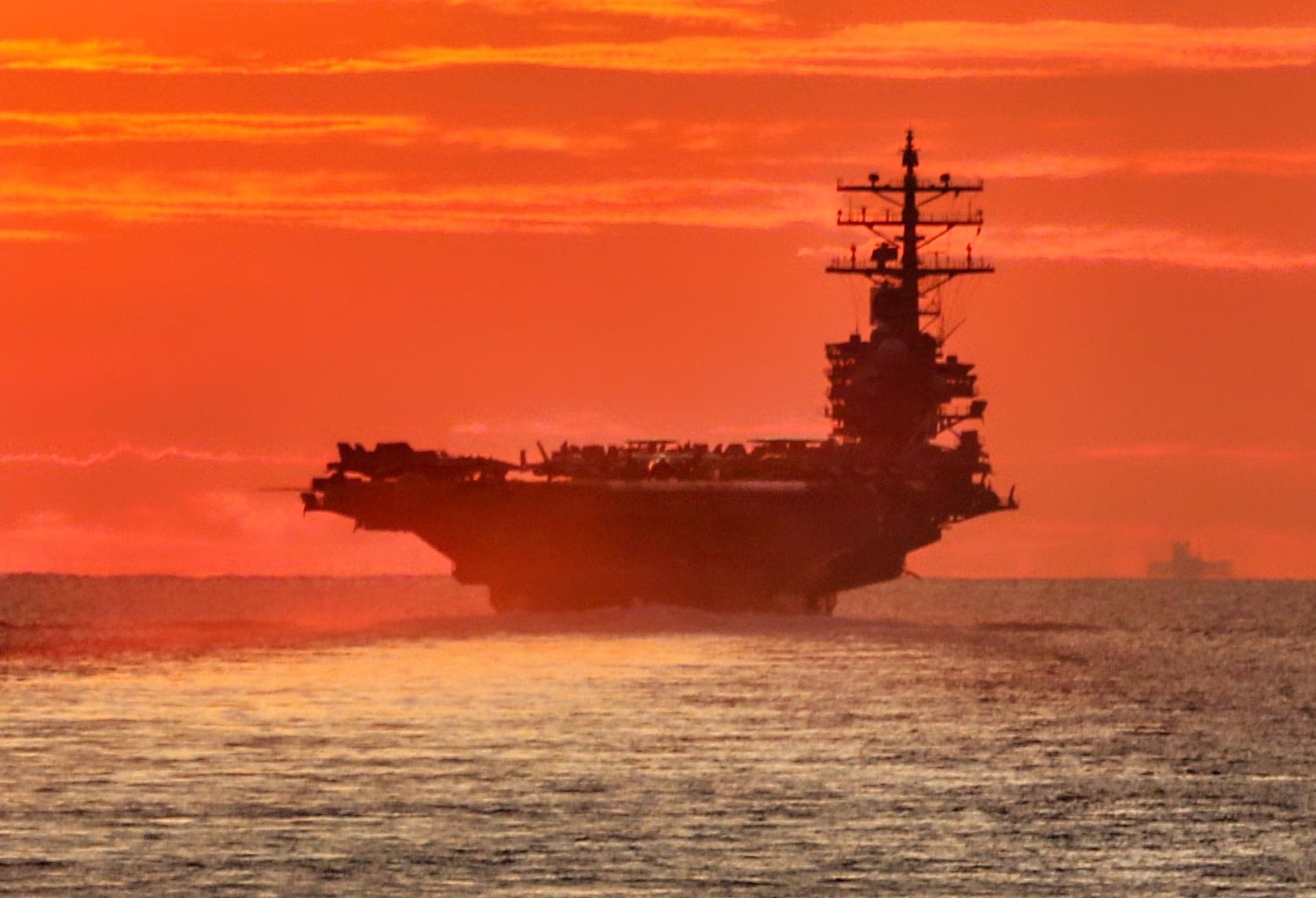The Houthi terrorists are such a pain. They are now tying up another U.S. aircraft carrier in the Middle East.
The bandits have been causing trouble with the USS Harry S. Truman strike group in the Red Sea and now the Department of Defense must react to shore up the Truman’s efforts against the insurgents. The second carrier to join the Truman will be the USS Carl Vinson.
The Vinson had previously been busy in East Asia helping patrol the waters outside South Korea and Japan.
Does This Mean that War Is Imminent?
This is disadvantageous for U.S. Naval strategy that assumes a potential two-war contingency in either Europe, the Middle East, or the Indo-Pacific.
Who would have thought that a ragtag bunch of Iranian-backed terrorists could tie up two carrier strike groups?
This means that the Navy has actually pondered the unthinkable – that the Truman or the Vinson could be hit by a Houthi missile.
The Navy has already ordered several strikes against Houthi military infrastructure including missile launch sites and munitions storage centers.
What would the Trump administration do if the Houthis hit paydirt on an aircraft carrier?
This would be the most frightful time for the Navy in decades.
Bomb Them to the Stone Age
Trump would surely go scorch-earthed against the Houthis and order ground strikes that target the terrorists directly. That means making martyrs out of the terror group. This conceivably could get Iran interested in striking back as Tehran is at the heart of the matter too.
Trump could also order an attack on Iranian military and nuclear infrastructure. This might be the time to do it as the Iranian air defenses are likely still blinded after an Israeli “bloody nose” attack last autumn.
So, the Houthis could spark a greater war in the Middle East should they hit a carrier. The stakes would be higher if the hit would kill or wound Navy sailors.
There Is Still China to Worry About
Moreover, in the Indo-Pacific, the United States must also plan for a potential attack from Chinese carrier-killing missiles.
China loves that the Houthis are requiring another Navy strike group to deploy to the Middle East.
They have essentially eliminated the Carl Vinson from East Asia without having to fire a shot. China has its three carriers in service and warships from this strike force could surround and blockade Taiwan at any given time. China has more than enough vessels to surround the island.
With one less U.S. carrier strike group in the region, Xi Jinping’s navy is better prepared for an operation against Taiwan.
In the Middle East, an open-ended shooting war with the Houthis would be disastrous. It is limited in scope now, but a carrier hit would raise the stakes to Vietnam War or even World War Two-like combat posture.
The Navy hasn’t worried about its carriers surviving during the Global War on Terror.
The Iraqis and Afghans had no means to attack a carrier. But the stubborn Houthis have the missiles to make the Americans stay out of range. This means much pressure is on Navy F-35C and F/A-18 E/F fighters to make a serious attack to end the reign of the Houthis if necessary. Plus, B-2 bombers from the continental United States could also bring doom to the terrorists.
Cruise Missile Submarines Will Play a Role if Needed
Submarines, not just carriers, are in the region too. Navy fast attack cruise missile boats have their finger on the trigger should the Houthis damage a carrier. Trump could order a massive Tomahawk strike against the terrorists. This combined with the Lightning IIs and Super Hornets would make the Houthis pay.
What Is the End Game Strategy in the Middle East?
But to what end? The Trump national security team must figure out a Middle East strategy quickly. What is the end state?
Does the United States want to eliminate every single terrorist? That would take a land warfare force of marines and there is no way this administration will ever have boots on the ground in the Middle East again.
The Republicans have been the anti-intervention party and doves like Vice President JD Vance would howl in protest should expanded warfare take place against the Houthis. Indeed, it was Vance who objected to a round of Houthi strikes in a Signal app discussion that was accidentally shared with the chief editor of the Atlantic magazine.
Vance would likely try to moderate a U.S. response while the Secretary of Defense, who is viewed as more hawkish than Vance, would probably want a more robust strike against the Houthis. Trump, driven by fury, would then order a massive response to send a message.
With the second carrier group in the region, U.S. primacy worldwide with its 11 aircraft carriers is becoming less assured. Carriers like the USS Nimitz are retiring and one-third of U.S. flat-tops can be in maintenance at any given time. Two in the Middle East hurts readiness in East Asia and the Houthis do not seem to be concerned that they could be attacked by another carrier battle group.

USS George HW Bush Aircraft Carrier. Image Credit: Creative Commons.

USS George H.W. Bush Aircraft Carrier. Image Credit: Creative Commons.

ATLANTIC OCEAN (Aug. 8, 2017) The Arleigh Burke-class guided-missile destroyer USS Donald Cook (DDG 75) maneuvers between the Ticonderoga-class guided-missile cruiser USS Philippine Sea (CG 58), left, and the Nimitz-class aircraft carrier USS George H. W. Bush (CVN 77), right, for a photo exercise during exercise Saxon Warrior 2017, Aug. 8. Saxon Warrior is a United States and United Kingdom co-hosted carrier strike group exercise that demonstrates allied interoperability and capability to respond to crises and deter potential threats. (U.S. Navy photo by Mass Communication Specialist 1st Class Theron J. Godbold /Released)
For decades, the United States has sent carriers to hotspots around the world when it wanted a show of force. But now, there are too many hotspots and not enough carriers. Plus, a flat-top deployment these days is more a part of tactics and operational art. That’s fine, but this type of strike group deployment does not mean there is an underlying strategy involved.
The only thing I hear from Hegseth is that he wants to make forces more lethal. That doesn’t sound like an overall international security strategy that keeps U.S. adversaries at bay. Let’s just hope the Houthis don’t land a punch because it looks like the terrorists are conducting asymmetric warfare against the best navy in the world and it is placing the Trump administration in a difficult situation.
About the Author: Dr. Brent M. Eastwood
Brent M. Eastwood, PhD is the author of Don’t Turn Your Back On the World: a Conservative Foreign Policy and Humans, Machines, and Data: Future Trends in Warfare plus two other books. Brent was the founder and CEO of a tech firm that predicted world events using artificial intelligence. He served as a legislative fellow for U.S. Senator Tim Scott and advised the senator on defense and foreign policy issues. He has taught at American University, George Washington University, and George Mason University. Brent is a former U.S. Army Infantry officer. He can be followed on X @BMEastwood.

